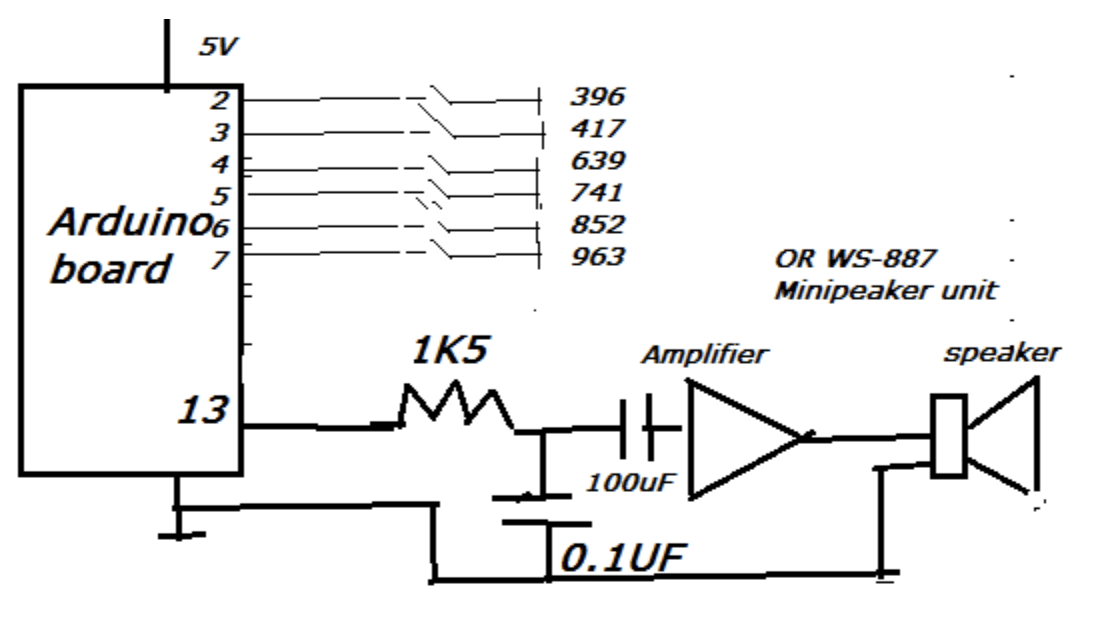
[ad_1]
Introduction
There are some typical frequency tones scribed in literature from ancient times which are very beneficial to hear. These are called “Solfeggio Frequencies”. The 528 Hz tone is predominantly known among the others -396, 417, 639Hz,7 41, 852, 963. One can recall a time when music helped to alter the mood. Whenever we were stressed out, we would put on some slow, calming music.
Of these the 528 Hz frequency is known as the Miracle Tone which causes Transformation and Miracles (DNA Repair and Healing).
The 528 Love frequency reduces stress, anxiety; it increases energy, improves concentration and focus. Further, it is stated that it can improve digestion, reduces pain and inflammation. It is called love frequency because it resonates with the heart and also brings a divine harmony. It is a part of meditation which awakens the mind to the spiritual magic of God.
The late Dr. Masaru Emoto discovered how water crystals were organized on hearing this tone and since the body cells contain water, it is but natural that cell energy is increased on hearing this frequency tone.
The other frequencies in the list are useful each one for a few specific purpose. The 396 Hz removes negative energy and eradicates a guilty feeling. The 417 Hz also removes negative energy from the body. The 639 Hz is able to bring about harmonious relations between persons. The 741 Hz is said to clean the body cells. The 852 Hz is able raise the cell energy. The 943 Hz is stated to raise the “Sahasrara Nadi”, and awakens ones intuitive power.
Therefore, one would try out hearing these tones, particularly the 528 Hz as soon as possible
The Generation of Solfeggio tones
It is possible to generate the signals easily and quickly with an Arduino-uno board. The frequencies are generated as square waves. The square wave will be output from one digital pin no.13. This square wave can be filtered to remove the harmonics if necessary; but it is more wholesome with the harmonics. After all, the 528 Hz square wave will comprise of the third and fifth harmonics at 1584 and 2640 Hz values. Their amplitudes will be 1/3 and 1/5 of the main 528 Hz and so it does not matter even without a filter.
The same applies to all the other frequencies.
The Arduino program just uses the microsecond delay function to generate the square wave. For example, the 528Hz has a period of 1894 microseconds because 1/528 x 1000000= 1893.9. This is the time time for one cycle. One half cycle of the wave is positive 5V and the other half cycle is 0 volts. For half this time the pin 13 is made high and for another half the time low. This square wave has DC component of half the value and that is blocked by the series capacitor at the output. Audio mini modules such as LM386 and PAM 8403 have an internal capacitor and so no external part is needed when using them.
The square wave is applied to an amplifier and loudspeaker. Any audio mini board module such as the PAM 8403 can be used. Since the speaker must be of good quality, the author used the WS-887 mini speaker unit which costs less and gives good sound quality.
The selection of the frequency is done by grounding the digital input pins shown in the diagram. These pins are kept pulled up and just connecting a jumper wire from the respective pin to ground will choose the frequency.
For the main 528 frequency, no digital pin is grounded. For the other frequencies, the digital pins 2 to 7 are grounded one at a time and power is applied. The corresponding frequency tone is output from the same 13 pin. When no switch is grounded, then the love frequency 528 only plays. It is necessary to select the switch before power is given to the board. It is not possible to change the tone when one tone is going on. That may not also be done because tones should not change often; one has to hear a particular tone for a continuous time.

The program
The program given is uploaded into the Arduino board from the computer running the Arduino IDE. Thereafter the Arduino can be operated from a separate 5V supply or battery 9V flat pack connected to the 9V socket on the board.
To test the usefulness of the tones, it is required to hear the same for a certain amount of time, about 30 minutes at least.
Components
- Aruduino uno board
- USB short cable
- Jumper wires
- Audio amplifier module such as PAM8403 or LM386 or WS-887 mini speaker.
Program lovefreq.uno
int numb=947;// if no switch is pressed, play the 528Hz tone
void setup() {
pinMode(13,OUTPUT);
pinMode(2, INPUT_PULLUP);
pinMode(3, INPUT_PULLUP);
pinMode(4, INPUT_PULLUP);
pinMode(5, INPUT_PULLUP);
pinMode(6, INPUT_PULLUP);
Serial.begin(9600);
pinMode(7, INPUT_PULLUP);
pinMode(8, INPUT_PULLUP);
int freq1 = digitalRead(2);
int freq2= digitalRead(3);
int freq3 = digitalRead(4);
int freq4= digitalRead(5);
int freq5 = digitalRead(6);
int freq6= digitalRead(7);
int freq7= digitalRead(8);
if (freq1==LOW)
numb=1262;
if (freq2==LOW)
numb=1199;
if (freq3==LOW)
numb=974;
if (freq4==LOW)
numb=782;
if (freq5==LOW)
numb=674;
if(freq6==LOW)
numb=586;
if (freq7==LOW)
numb=519;
}
void loop() {
digitalWrite(13,HIGH);
delayMicroseconds(numb);
digitalWrite(13,LOW);
delayMicroseconds(numb);
}
[ad_2]






